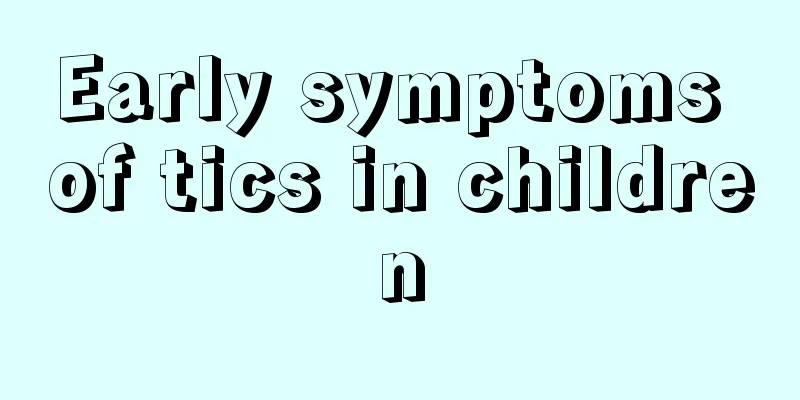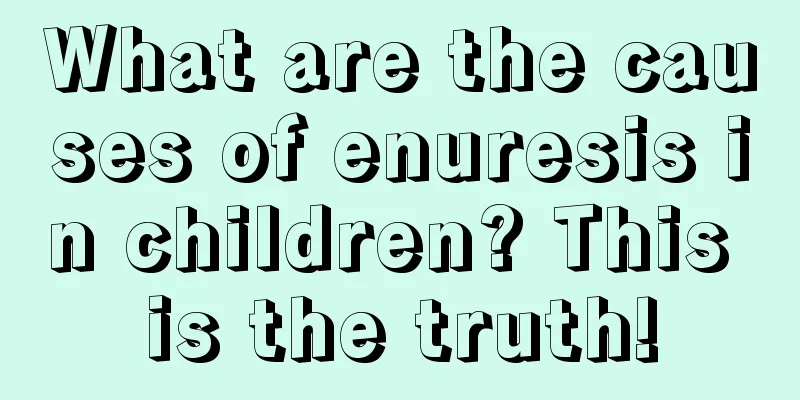What are the symptoms of childhood rectal polyps?

|
For a long time, people have mistakenly believed that rectal polyps only occur in adults. In fact, many children also suffer from this condition. Many people can recognize the harm of this disease, but what should they do when children suffer from this condition? What symptoms will this disease have in children? Let me answer this question for you, I hope you will be satisfied. Intestinal polyps in children are mainly located in the rectum, and the majority of patients are between 2 and 8 years old. Traditional views hold that intestinal polyps in children are often benign and are likely to disappear on their own, so there is no need to worry. But recent research suggests that this sense of security is unreliable. Intestinal polyps in children, especially multiple polyps, are not always benign. As the number of intestinal polyps increases and the duration prolongs, the risk of neoplastic changes increases. The main clinical manifestations are blood in the stool or blood dripping after defecation. The blood is bright red in color and adheres to the surface of the stool without mixing with the stool. The amount of bleeding is often not large, but it is very similar to internal hemorrhoid bleeding. Therefore, when there are symptoms similar to internal hemorrhoid bleeding in children, the possibility of rectal polyposis should be considered first. When the polyp stalk is long, it may fall out of the anus during forceful defecation and then retract after defecation. Some high-positioned polyps may prolapse back and forth and cause colon intussusception. In addition to the above symptoms, clinical diagnosis mainly relies on digital rectal examination. After the child empties the stool, the examiner wears gloves and applies lubricant, slowly inserts the index finger or middle finger into the anus and carefully palpates. Often, a long-pedunculated, slightly hard, movable and smooth spherical polyp can be felt. No polyps were found after repeated palpation. Use a pediatric colonoscope to slowly insert it into the rectum for examination in the same way. The method is to observe and rotate it to see if the scope is inserted into the intestinal cavity. Do not insert the scope blindly, otherwise the slightest force can cause damage to the intestinal wall and bleeding, or even rupture and perforation. When stool blocks the colonoscope, use long forceps to remove it and suck it out with a large cotton ball. You can also use the mirror withdrawal method to observe while withdrawing the mirror. When a child develops rectal polyps, he or she should go to the hospital to see a doctor, who will develop a more reasonable treatment method based on the situation. Generally speaking, if the symptoms of polyps do not affect the child's physical health, most of them do not require surgical treatment. Some will gradually disappear as the child grows, but regular check-ups in the hospital are required. |
<<: Why is the diarrhea yellow in children?
>>: What should we do if children have dental polyps?
Recommend
What to do if your child has prickly heat
In summer, the temperatures both indoors and outd...
What is the difference between acne and eczema in newborns?
In most cases, non-professionals have no idea abo...
Is neonatal jaundice 19 serious?
Jaundice is a disease that occurs relatively freq...
How many days does it take to wean a baby?
In fact, at the beginning, the most nutritious fo...
What are the hazards of newborn shaping pillows?
The newborn shaping pillow is a common baby-speci...
What to do if a 10-year-old girl has breast development
Nowadays, most families are only willing to have ...
What should I do if my six-month-old baby has a cold or cough?
Cold and cough are very common diseases. Almost e...
Can childhood asthma be eradicated?
Asthma is a disease that occurs frequently and ha...
What is osteoporosis in children?
When it comes to osteoporosis, everyone probably ...
What department should I go to for child development?
Nowadays, many mothers do not know that they shou...
How to apply for a child's medical insurance card
It is inevitable that children will get sick and ...
What should a 3-year-old baby eat if he is zinc deficient?
What should a 3-year-old baby eat if he is zinc d...
How many days does herpes virus cure in children?
The occurrence of viral herpes in children is ver...
How to supplement calcium and zinc deficiency in children
Calcium and zinc deficiency is very common in chi...
How long does it take for a child to talk and walk?
After a child is born, parents are very concerned...









